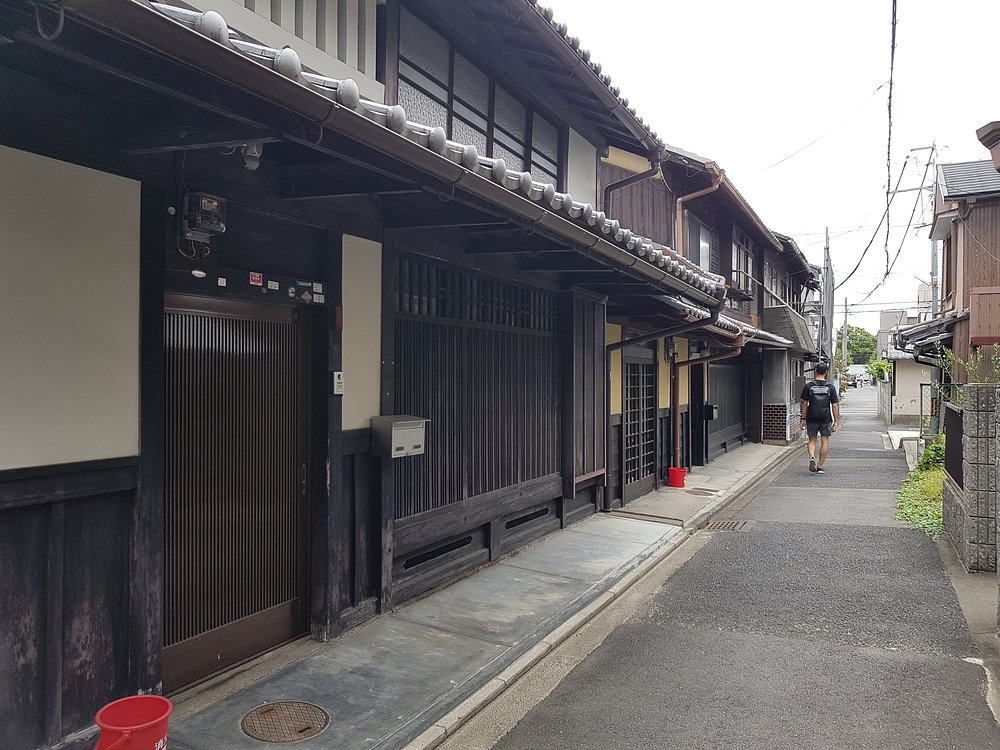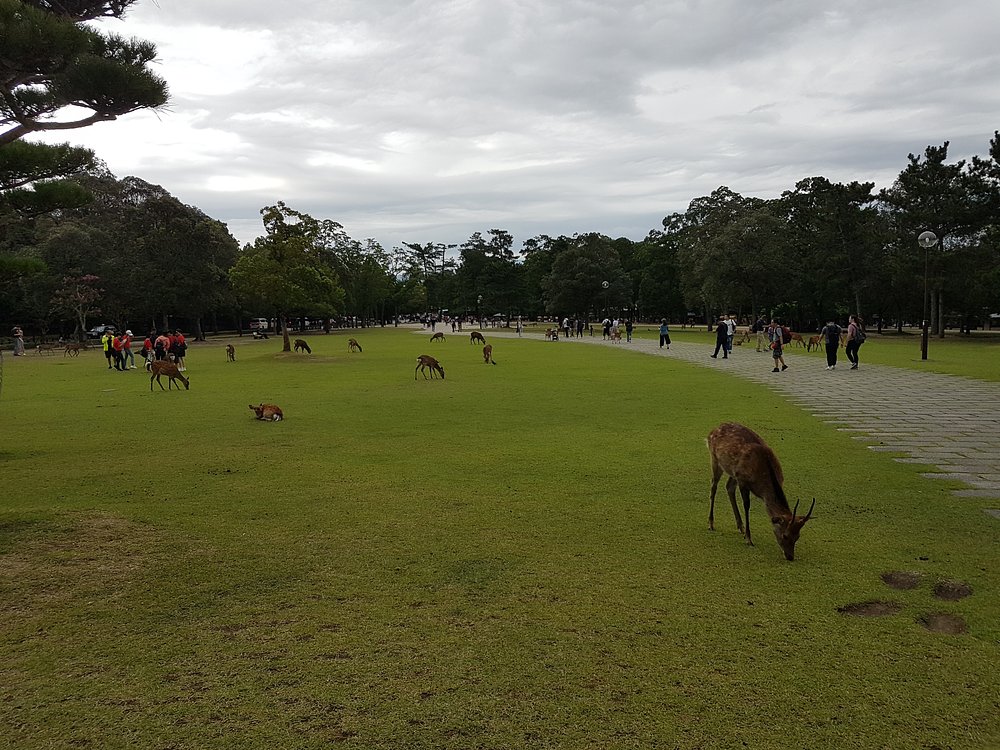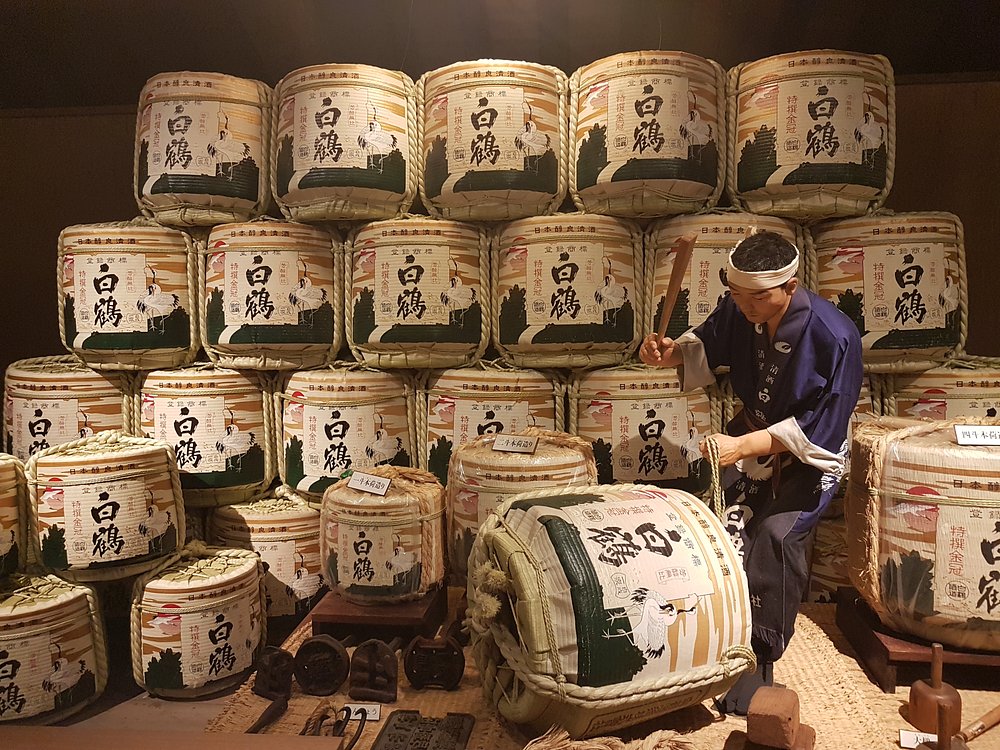Arrival
Kyoto Station, whith its distinct architeture, is the central reference point for the city with the adjacent observation tower, is the shinkansen stop, as well as the stop for many other trains. The station also sees bus service to Kansai International Airport, which services both Kyoto and Osaka.
Day 1: Arashiyama
Arashiyama is one of Kyoto's most picturesque areas. The famed bamboo forest is not terribly large, but is very tall, which makes it very impressive. If you follow the path from the nearby Arashiyama station, the walk through the grove will end at Kameyama Park, and a short stroll up to the top of the park will give a stunning view of the Katsura River canyon. Immediately east of the park you will find Tenryuji Temple, with its stunning gardens. The river shoreline is accessible by a path down along the cliffside, which wll take you to the Kotokiki bridge. The bridge crosses over to a pleasant river island park before going to the opposite shore, where immediately overhead you'll see Iwatayama Money Park atop the hill. The park lets you see the monkeys up close, and even feed them, and also has sweeping views of the city.
Day 2: To-ji, Fushimi Inari Taisha, and Gion
To-ji is a temple located immediately south of Kyoto Station, and is somwhat emblematic of the city with one the tallest pagoda in Japan. Although the pagoda itself is not accessible, the other temple structures can be visited, and the complex as a whole is very impressive.
Conversely, Fushimi Inari Taisha is not emblematic of the city, but is world renown. This temple complex is known for its thousand red gates that line the steps up the mountain path. The views from the mountaintop are more limited than in Arashiyama, but the experience is in completing the 1.5 to 2hr hike beneath the redgates the whole way up.
Day 3: Imperial Palace, Kyomizu-dera, and Gion
The Kyoto Imperial Palace was the home of the Japanese imperila dynasty for centuries, and it shows. The aplace grounds are open to the public, and the palace hosts guided tours throughout the day.
Kiyomizu-dera is another hilltop temple, but one that is immediately the central area of the city. In the complex you will find Kyoto's other 5-storey pagoda, as well as several temple structures perched on the the edge of the hill. The main hall is built atop a small waterfall that is said to have wish-granting (potable) waters.
To close off the day, I went around Gion at night. The Gion neighbordhood is one of the best preserved traditional districts in the city, and it is immediately accessible downhill to the west of Kiyomizu-dera. The neighbordhood is particularly popular at night due to a high density of bars a Izakayas (pubs). The shoreline of the Kamo River is also readily accessibel if you want an open air picnic or adult beverage.
Departure
Like with arrivals, all major modes of transport depart from Kyoto Station. Getting to Osaka is a relatively short trip regardless of how you choose to travel as the two cities are fairly close to each other. If you chose to re-arrange the itinerary, you can travel directly from Fushimi Inari to Osaka. As noted before, there is also bus service directly to Kansai Airport.







Share your thoughts
Please Sign In to leave a comment.
Please Sign In to leave a comment.